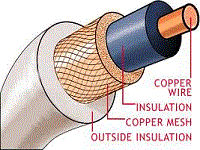Polarization
POLARIZATION is the chemical action that occurs in the cell while the current is flowing causing hydrogen bubbles to form on the surface of the anode.
Some hydrogen bubbles rise to the surface of the electrolyte and escape into the air, some remain on the surface of the anode. If enough bubbles remain around the anode, the bubbles form a barrier that increases internal resistance.
When the internal resistance of the cell increases, the output current is decreased and the voltage of the cell also decreases.
A cell that is heavily polarized has no useful output. There are several methods to prevent polarization or to depolarize the cell.
One method uses a vent on the cell to permit the hydrogen to escape into the air. A disadvantage of this method is that hydrogen is not available to reform into the electrolyte during recharging.
This problem is solved by adding water to the electrolyte, such as in an automobile battery.
A second method is to use material that is rich in oxygen, such as manganese dioxide, which supplies free oxygen to combine with the hydrogen and form water.
A third method is to use a material that will absorb the hydrogen, such as calcium. The calcium releases hydrogen during the charging process. All three methods remove enough hydrogen so that the cell is practically free from polarization.
LOCAL ACTION
When the external circuit is removed, the current ceases to flow, and, theoretically, all chemical action within the cell stops.
However, commercial zinc contains many impurities, such as iron, carbon, lead, and arsenic. These impurities form many small electrical cells within the zinc electrode in which current flows between the zinc and its impurities. Thus, the chemical action continues even though the cell itself is not connected to a load.
Local action may be prevented by using pure zinc (which is not practical), by coating the zinc with mercury, or by adding a small percentage of mercury to the zinc during the manufacturing process.
The treatment of the zinc with mercury is called amalgamating (mixing) the zinc. Since mercury is many times heavier than an equal volume of water, small particles of impurities weighing less than mercury will float to the surface of the mercury. The removal of these impurities from the zinc prevents local action.
The mercury is not readily acted upon by the acid. When the cell is delivering current to a load, the mercury continues to act on the impurities in the zinc. This causes the impurities to leave the surface of the zinc electrode and float to the surface of the mercury. This process greatly increases the storage life of the cell.
(back) (top) (next) (return to batteries page)

















